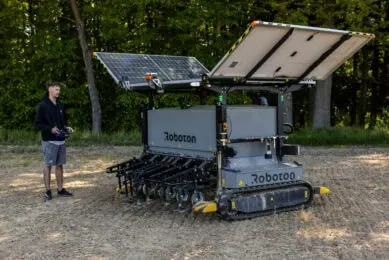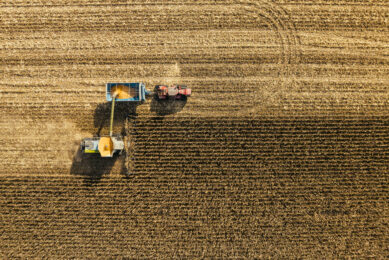Lommers builds 20 asparagus harvesting robots for 2026 season

After 3 years of development, including a complete harvesting season, the harvesting robot is now ready for commercial use, according to Lommers Tuinbouwmachines. A series of 20 machines will become available for the 2026 season.
According to Toine Lommers of Lommers Tuinbouwmachines from the Dutch town of Bergeijk, harvesting asparagus with their harvesting robot has gone entirely according to plan for an entire season. In March, the testing phase began on plots belonging to Rick van Meijl, a large asparagus grower in the region. The robot was further developed in collaboration with this grower. By the end of the season, Lommers concluded that the robot was ready for commercial use. His goal is to build a series of 20 robots for the upcoming season. Lommers will perform the service for these 20 units himself, either on-site in the field or remotely for software-related issues.
Cutting mechanism
The harvesting robot is equipped with two harvesting units, each with a harvesting knife that closely resembles a manual harvesting knife. The knife cuts into the asparagus from the side and lifts it slightly upwards. Lommers has now secured European patent rights for this cutting mechanism. Due to the mechanism, the asparagus remains standing upright in the ridge, enabling the operator seated next to the ridge on one side of the machine to collect it easily. If the operator struggles to keep pace, the robot can be slowed down with a foot pedal.
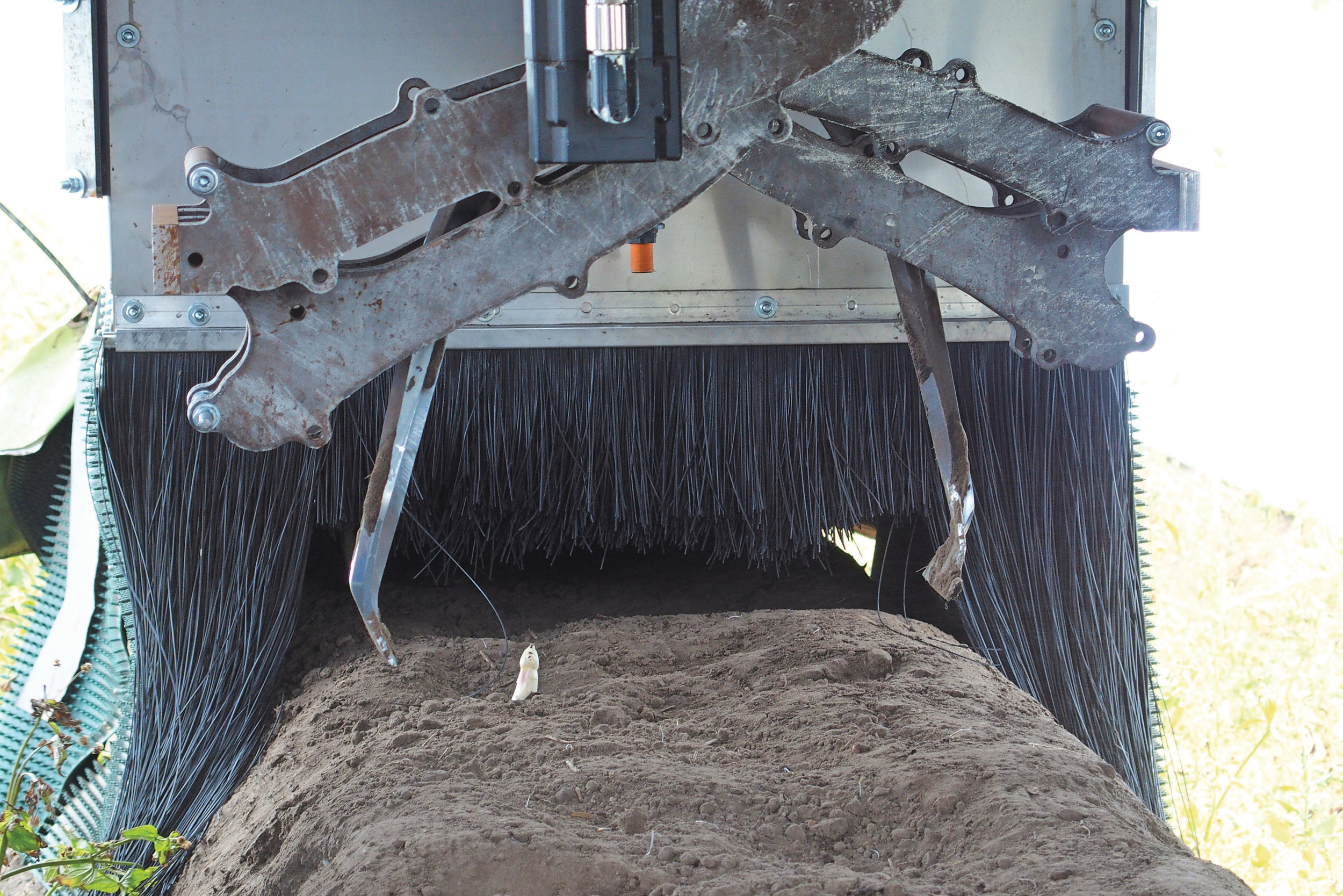 The 2 harvesting knives closely resemble manual harvesting knives.
The 2 harvesting knives closely resemble manual harvesting knives.Detection method
At the rear of the machine, the ridge is smoothed flat by five plastic fingered sweepers. These sweepers are already commonly used for cleaning conveyor belts but have proved extremely suitable for flattening the ridge. According to Lommers, flattening the ridge is not always necessary. “It’s mainly required if a field has occasionally been harvested manually, as manual harvesting creates indentations that make camera detection more difficult.”
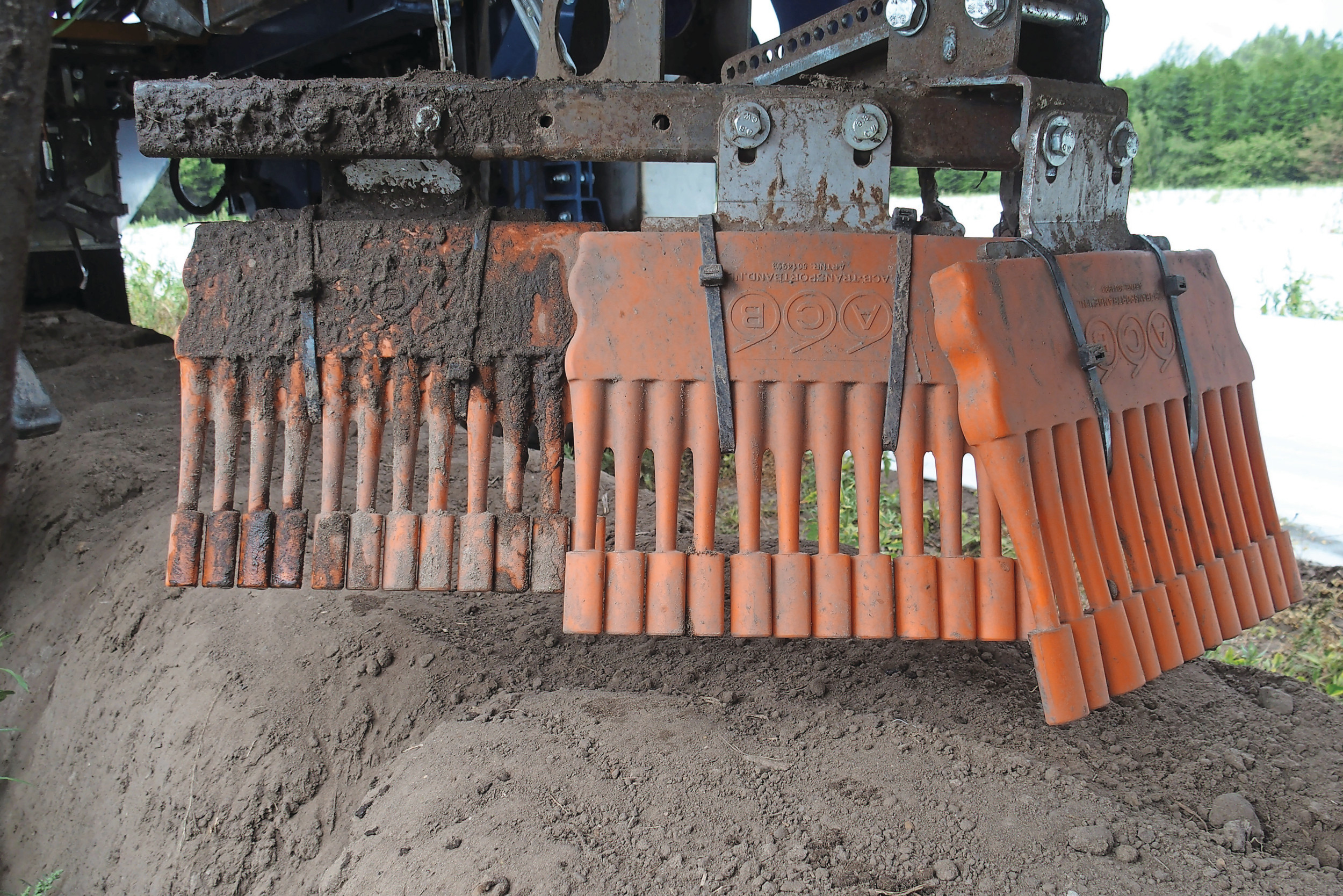 The ridge is smoothed flat at the end of the machine by 5 plastic fingered sweepers.
The ridge is smoothed flat at the end of the machine by 5 plastic fingered sweepers.Manual harvesting occasionally occurs due to labour planning. “It has never occurred due to robot malfunctions, as we experienced no mechanical failures. Any downtime we had was related to the camera and detection. That is why we switched to a different camera at a certain point. However, this makes the robot slightly more expensive.” The investment amounts to approximately €175,000.
According to Lommers, asparagus detection functions excellently, with stones and grass causing no false detections. The only challenge occurs when the camera mistakes asparagus fragments for whole asparagus spears. It is therefore important that manual harvesters do not leave asparagus pieces on the ridge, as leftover asparagus tips can confuse the robot. The camera has a detection width of 60 centimetres and is positioned at an angle to enhance asparagus detection.
If you want to cut a curved asparagus spear entirely and straight, you require a wider knife
Another consideration is curved asparagus spears. “During the season, we noticed the number of curved asparagus spears increased. If you want to cut a curved spear entirely and straight, you require a wider knife. After all, the head of the spear is detected, but if the spear curves outside the cutting range at a depth of 25 centimetres, it will not be harvested. This means you need a knife wider than 6 centimetres, perhaps 8, 10, or 12 centimetres. The choice depends on the grower because a wider knife carries a greater risk of damaging closely spaced asparagus spears.”
Furthermore, Rick van Meijl states that currently, it remains necessary to alternate mechanical harvesting with manual harvesting. “This is still required to keep the ridges clean.””
Choice of knives
Lommers invested considerable time choosing the right knives, focusing on hardness, wear resistance, and sharpness. “With the current knives, sharpening every 2 to 4 hours is recommended. This task takes almost no time, as there are only two knives to sharpen. Automating this would be possible, but the cost does not justify the benefit
The harvesting speed per asparagus spear is 2 seconds, but with two harvesting units, theoretically, one asparagus spear can be harvested per second. In practice, this varies as spears do not emerge at equal distances. “The driving speed is dynamically adjusted based on the number of asparagus spears to be harvested. On average, we achieve 2.5 km/h, but it can go up to 3.5 km/h.”
Autonomous turning
In the field, one operator is required to run the machine. This person collects the asparagus in crates weighing 15 kilograms, eight of which are carried on a storage rack by the robot. At the end of a row, the robot stops automatically using GPS and raises itself slightly. It then drives forward another 3 metres to let the plastic film fall back onto the ridge. At that point, the operator reattaches the black-and-white film. The robot guides the film through a channel, over the top of the machine. Turning into the next row takes no more than 2 minutes.
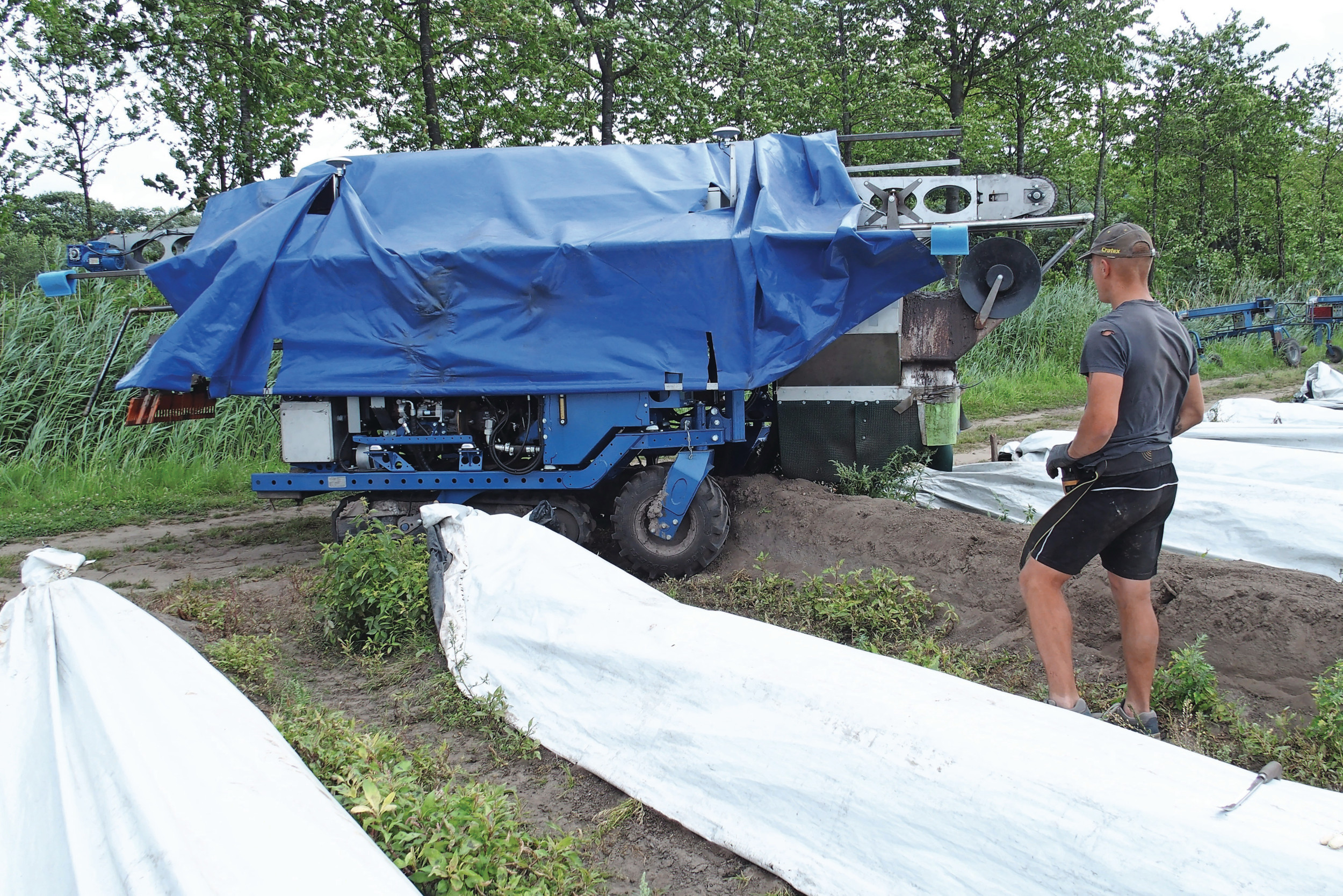 The robot can quickly move into the next row due to its small turning circle.
The robot can quickly move into the next row due to its small turning circle.
